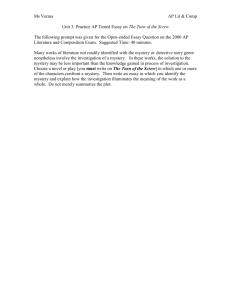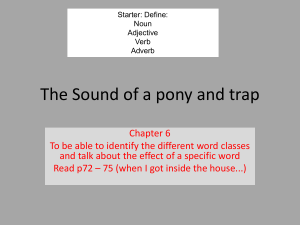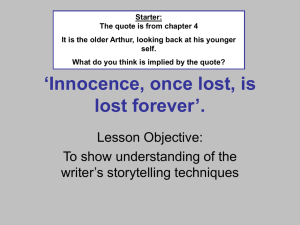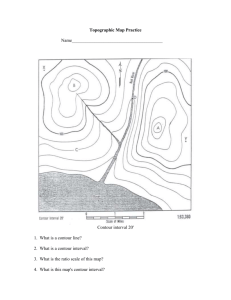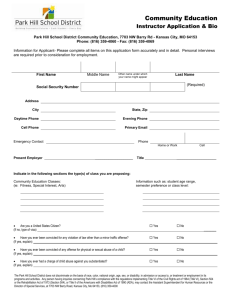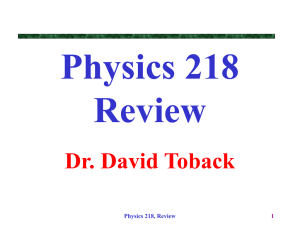Feedback of The Woman in Black Essay Question
advertisement
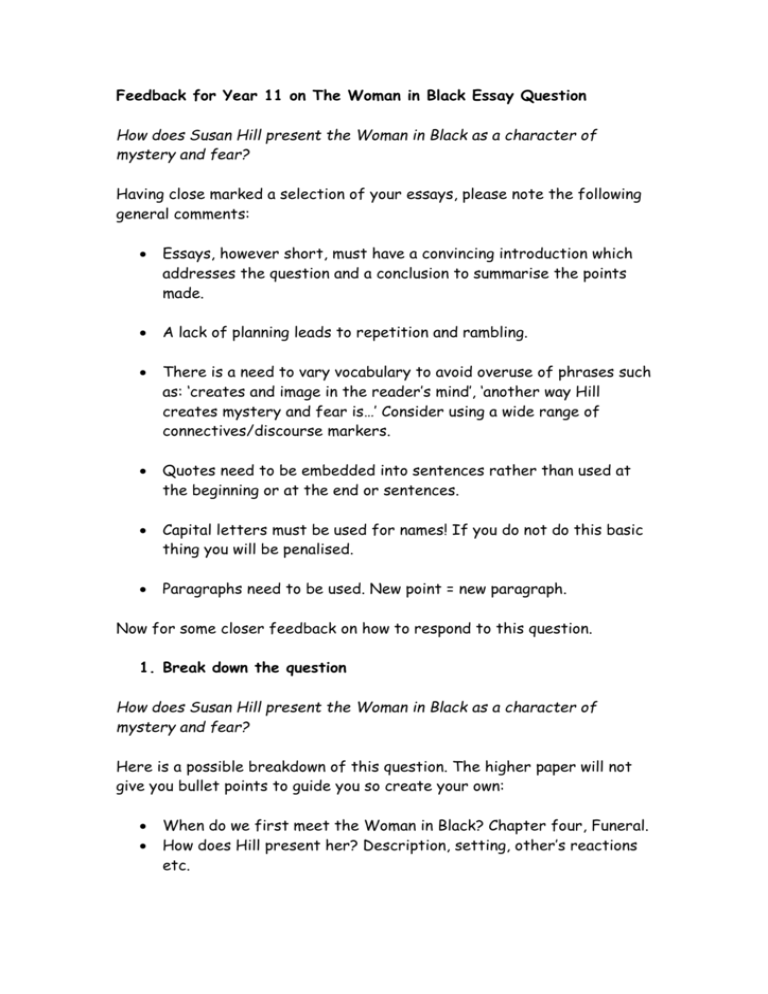
Feedback for Year 11 on The Woman in Black Essay Question How does Susan Hill present the Woman in Black as a character of mystery and fear? Having close marked a selection of your essays, please note the following general comments: Essays, however short, must have a convincing introduction which addresses the question and a conclusion to summarise the points made. A lack of planning leads to repetition and rambling. There is a need to vary vocabulary to avoid overuse of phrases such as: ‘creates and image in the reader’s mind’, ‘another way Hill creates mystery and fear is…’ Consider using a wide range of connectives/discourse markers. Quotes need to be embedded into sentences rather than used at the beginning or at the end or sentences. Capital letters must be used for names! If you do not do this basic thing you will be penalised. Paragraphs need to be used. New point = new paragraph. Now for some closer feedback on how to respond to this question. 1. Break down the question How does Susan Hill present the Woman in Black as a character of mystery and fear? Here is a possible breakdown of this question. The higher paper will not give you bullet points to guide you so create your own: When do we first meet the Woman in Black? Chapter four, Funeral. How does Hill present her? Description, setting, other’s reactions etc. What language techniques are used? Adjectives, verbs, imagery, unanswered questions, foreshadow, connotation. How does form and setting create mystery and fear: gothic genre. 2. Plan your answer Now you have broken down the question, you can start planning your answer more fully. The foundation paper will provide a number of bullet points for you but on the higher paper you will need to plan your own answer, perhaps with bullet points or a mind map. 3. Structure your essay Your essay must have an introduction, a development section (middle) and a conclusion. Introduction: keep it short and address the question. Start with a strong statement: e.g. Hill presents the Woman in Black as both a figure of mystery and fear. Don’t waste time telling me what you’re going to do, instead just refer to the key words of the question: e.g. Using a variety of language techniques and conventions of the ghost story genre, Hill skilfully prepares the reader for a story of ‘haunting and fear’ by presenting the reader with a character that is both vividly described and yet tantalisingly mysterious. Then move on to the development section 4. Development or ‘the middle bit of your essay’ The success of this depends on how well you have planned. You should have jotted down notes of each point. Now you need to put them together to flow smoothly. Use discourse markers: e.g. First, furthermore, however, another example, moreover, lastly. 5. Using quotations and referring to the text You MUST use quotations and references to the text in an exam answer. (This forms the Evidence part of the PEE process). You can use quotes in 2 different ways: 1. Separate quote: make your point and then back it up with a quotation. Quotations that are longer than 3 words should begin on a new line: e.g. Hill describes the way filthy fog permeates every aspect of life. This is a really disgusting simile: (the fog)’…seething through cracks and crannies like sour breath,’ 2. Imbedded quotation: this is where the quote runs on from your own words: The older Kipps looks back at his own ‘priggish’ behaviour as a young man… Alternatively, you can simply refer to the text (this is especially good if you can’t remember the exact quotation). Kipps refers to the way Londoners look down on people from the provinces. 6. Referring to the title and author Refer to Susan Hill by her surname only. To save time give the title of the book in full the first time you mention it, for example: ‘The Woman in Black (TWIB). You can now use TWIB on its own. 7. Writing in the appropriate style Do not use slang/colloquial language unless in a direct quote from the text. Do not address the reader directly or become too personal e.g. Mr Bentley reminds me of my doctor because… Use academic phrases e.g. It could be argued that…’ rather than ‘I reckon’.

